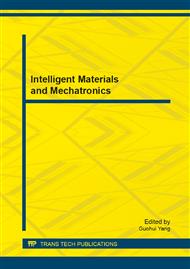p.156
p.163
p.171
p.179
p.184
p.189
p.194
p.199
p.203
Rapid and High-Efficient Composting Process of Municipal Sewage Surplus Sludge
Abstract:
This thesis is based on the target of the sludge which was dehydrated and percolated by sewage treatment plant. It conducts the feasibility analysis for the agricultural usage of sludge in cities, and carries out composting experiment of dehydrated and filtered sludge which lasts for about fifteen days. This thesis also does some research on the techniques of composting and parameters of sludge. This thesis has some researches on the temperature of sludge, moisture, organic matter, pH, total phosphorus content of nitrogen, heavy metals content and forms, the germination rate index (GI), and other changes during the process of composting. The results show that, after the composting, there has a significant decline in moisture content of the sludge and the organic matters; pH remains neutral; nitrogen has declined; total phosphorus increased. Composting can make majority of heavy metals reduced which was absorbed by the plant that means the decline of unstable heavy metal content. After the composting, germinations rate index (GI) is more than 50 percent, which shows that the composting products have no toxicity and indicates the maturity of composting. Through the analysis of the organic matter of the sludge plant, PH, plant nutrients (N, P,) content, heavy metal content and its forms of distribution and germination rate index (GI), it shows that the sludge of this plant has a good agricultural prospect.
Info:
Periodical:
Pages:
184-188
Citation:
Online since:
November 2013
Authors:
Price:
Сopyright:
© 2014 Trans Tech Publications Ltd. All Rights Reserved
Share:
Citation:


